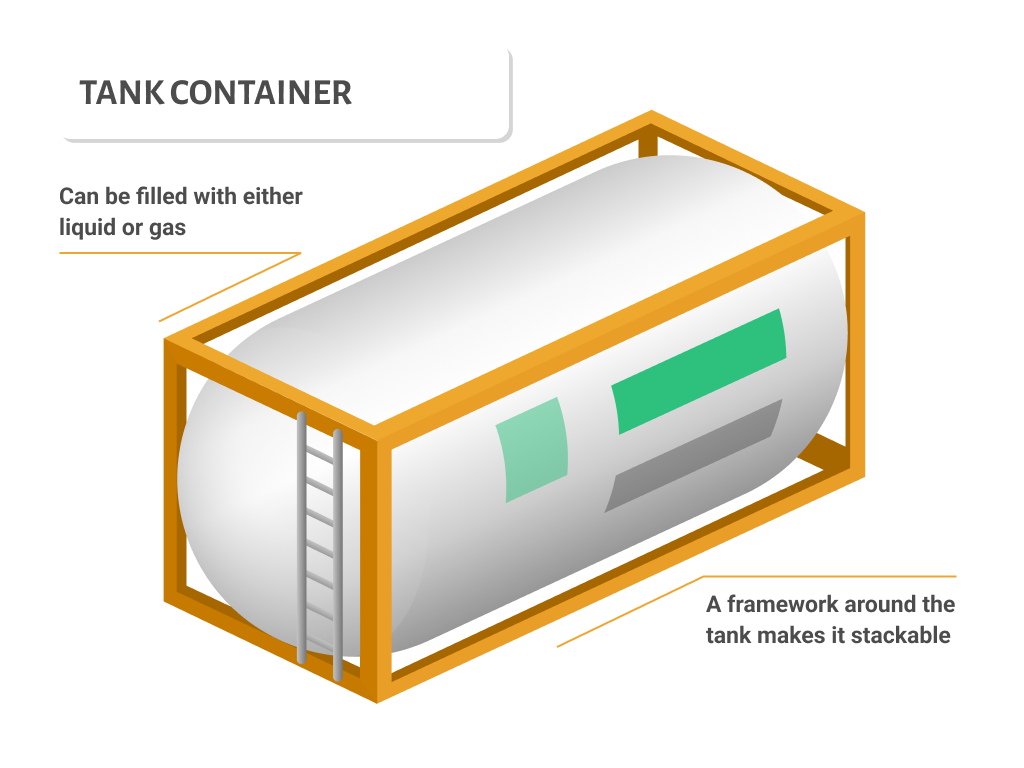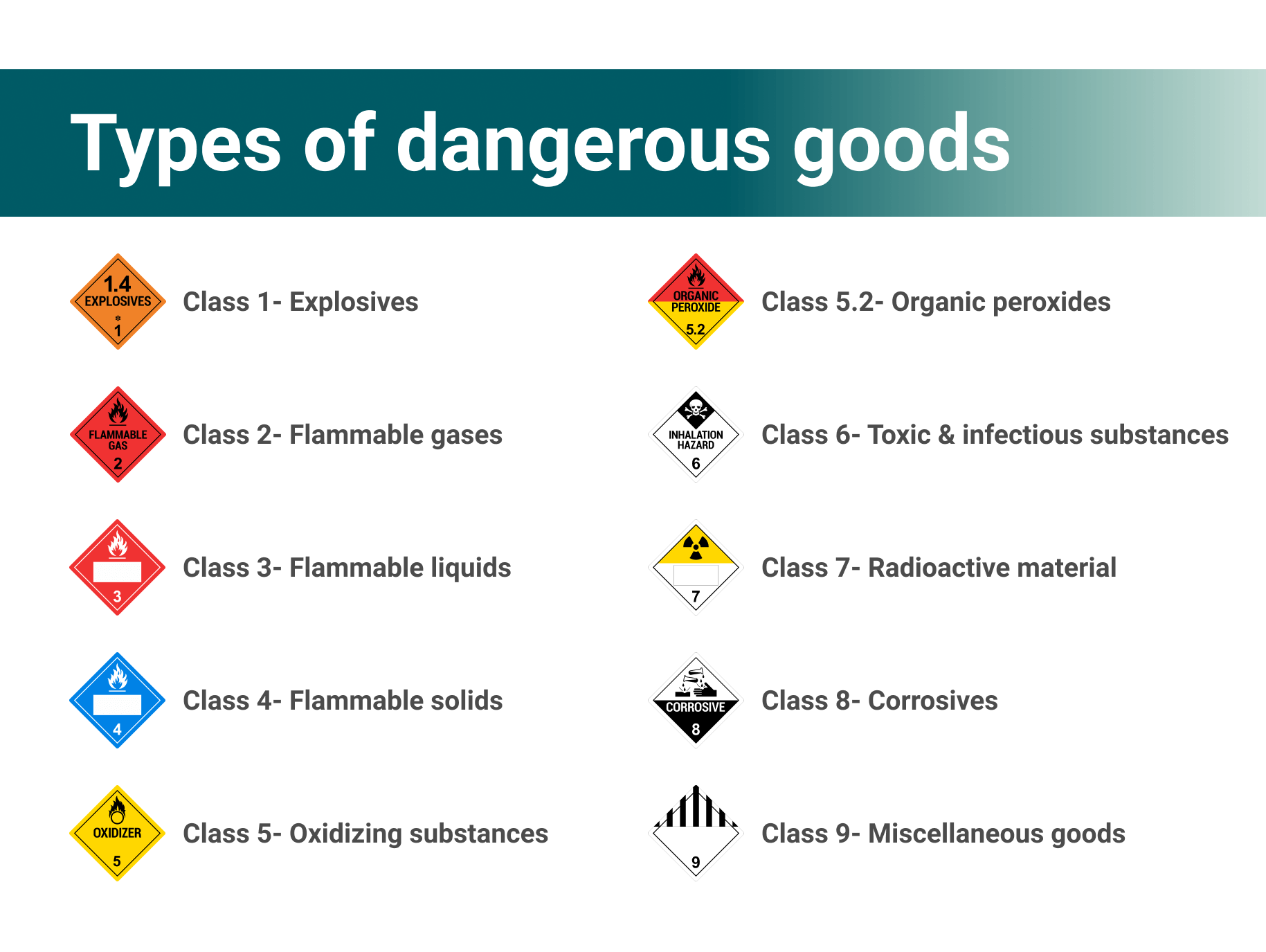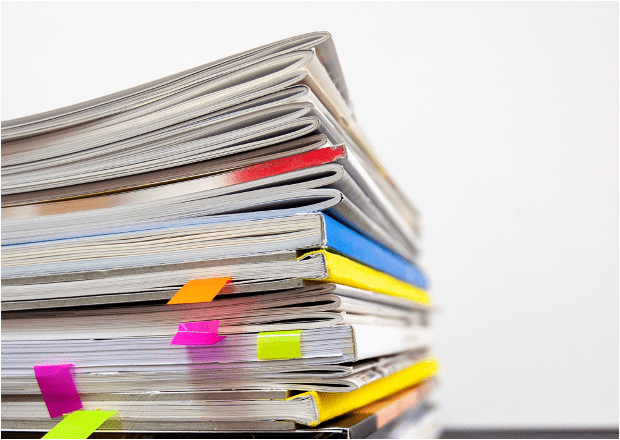Dangerous goods shipping calls for careful and thorough assessment before they set sail. Read the blog to learn the requirements for shipping dangerous goods and how you can find relevant containers to move hazardous goods.
In the wake of the recent explosion at Ningbo-Zhoushan Port, one of China’s busiest ports, the discussion on handling hazardous goods with the utmost care has surfaced again. The incident involved a container ship carrying hazardous goods erupting in a massive fireball that completely engulfed other stacked containers. Fortunately, no one was injured, but this incident raised serious concerns about safety protocols and regulations.
Another event that occurred was the X-Press Pearl disaster in Sri Lanka in 2021, which also serves as a reminder of the consequences when hazardous goods are mishandled. The ship, carrying tonnes of nitric acid and oil, sank, causing a pollution crisis in Sri Lanka.
Incidents like these remind us of the critical need for proper handling of hazardous goods, including appropriate documentation, trained personnel, and the use of specialized containers.
In this blog, we delve into the intricacies of shipping dangerous goods and explore safety measures and compliance. However, if you’ve been in the industry for too long and are well aware of the regulations already, you can use Container xChange to find special containers that are right for your cargo type.
Use our public search below to explore containers for shipping hazardous goods.
9,305 results found on the platform.
Container prices start from $400/unit.
Currently no match for your search
Change your search criteria or fill out the form below to get notified via email when there is a new match for you on xChange!
-
Pick-up

20DC (Cargo worthy)
3 units available
YOM:
Year of manufacture:
2004
2010
Savannah, GA
per container
Non-negotiable price$
1090
-
Pick-up

20DC (Cargo worthy)
6 units available
YOM:
Year of manufacture:
2004
2010
Savannah, GA
per container
Non-negotiable price$
1090
-
Pick-up

40HC (Brand new)
20 units available
YOM:
Year of manufacture:
2024
2024
Yekaterinburg, Sve
per container
Negotiable price$
1800
Showing 3 of 9,305 results
Load more()
YOM:
Year of manufacture:
per container
$
What are dangerous goods?
Dangerous goods are substances or items that pose a risk to safety, health, environment, or property while shipping. They must be handled with the utmost care, right from the beginning to the end of the shipping process.
Dangerous goods can be in solid, liquid, or gaseous forms. They can be corrosive materials as well as items of daily use like perfumes. Many dangerous goods are transported in tank containers. It provides safety in transportation and also helps in bulk transportation since tank containers are stackable.

Let’s now look at the different classes of dangerous goods for a better understanding of how they’re transported.
Dangerous goods shipping: 9 types of hazardous goods
The UN Committee of Experts on the Transport of Dangerous Goods classifies dangerous goods into 9 classes based on the risk they pose.
Class 1: Explosives
As the name suggests, explosives are materials that can rapidly conflagrate or detonate as a consequence of a chemical reaction. These are further divided into six sub-classes.
- Division 1.1: Articles or substances that have a mass explosion hazard.
- Division 1.2: Articles or substances that have a projection hazard but not an explosion hazard.
- Division 1.3: Articles or substances that have a fire hazard and either a minor blast hazard or a minor projection hazard or both.
- Division 1.4: Articles or substances that present no significant hazard but only a small hazard in case of ignition
- Division 1.5: Extremely sensitive substances which have a mass explosion hazard
- Division 1.6: Very sensitive articles which don’t have a mass explosion hazard
Some examples include explosives such as fireworks, flares, and gunpowder.
Class 2: Gasses
This class includes gases that pose a risk to the safety of humans or the environment. Gasses can be compressed, liquified, dissolved, refrigerated, or a mixture of two or more gasses. This class is also divided into three sub-sections.
- Division 2.1: Flammable gasses
- Division 2.2: Non-flammable, non-toxic gasses
- Division 2.3: Toxic gasses
Examples of gasses are helium, oxygen, chlorine, etc.
Class 3: Flammable liquids
A flammable liquid is a liquid, a mixture of liquids, or a liquid containing solids that has a very low ignition temperature. This means that these liquids ignite easily. They are very dangerous to transport, as they are extremely volatile and combustible. Examples are kerosene, acetone, gas oil, etc.
Class 4: Flammable solids
Just like flammable liquids, there are flammable solids that are easily combustible. Flammable solids are further divided into three sub-categories.
- Division 4.1: Flammable solids
- Division 4.2: Spontaneously combustible substances
- Division 4.3: Dangerous when wet
Some examples include metal powders, sodium batteries, activated carbon, etc.
Class 5: Oxidizing substances
This class includes oxidizing agents and organic peroxides. These goods are extremely reactive because of their high oxygen content. They can combust easily. Examples include lead nitrate and hydrogen peroxide.
Class 6: Toxic and infectious substances
As the name suggests, toxic substances pose a threat to humans if swallowed, inhaled, or through skin contact. Similarly, infectious substances can cause disease in humans or animals. Some examples include medical waste, dyes, biological cultures, etc.
Class 7: Radioactive material
These substances need no introduction. They’re extremely dangerous if they become unstable. These materials can pose a serious threat to humans and the environment. Examples are medical isotopes and yellowcake.
Class 8: Corrosives
Corrosive materials degrade or disintegrate other materials upon contact. They’re highly reactive and produce a positive chemical effect. Some examples are batteries, chlorides, and paints.
Class 9: Miscellaneous goods
This category includes all the other materials that are dangerous but are not part of the above classes. For example, dry ice, marine pollutants, motor engines, etc.

Let’s now look at the packaging requirements if you want to ship any of these goods.
Packaging requirements for dangerous goods shipping
Here are the packaging requirements you need to keep in mind while shipping dangerous goods.
- UN number: This is a 4-digit code preceded by the letters UN. The number is assigned to a single substance or a group of substances. For example, the UN number for Acetone is UN 1090.
- PSN: It stands for proper shipping name. This term accurately describes the cargo. For example, the PSN for lighters is LIGHTERS.
- Packing group: The UN has three packing groups: I, II, and III. The groups help determine the degree of packing required for a particular good.
Apart from this, you also need proper documents for dangerous goods shipping.
Documents for shipping dangerous goods
Here are some of the important documents you need if your company wants to ship dangerous goods and wants easy customs clearance in ports.
Material safety data sheet
Material safety data sheet (MSDS) contains information about potential hazards and how to work safely with dangerous goods during transportation.
Dangerous goods declaration
A Dangerous Goods Declaration (DGD) states the category of dangerous goods. It also includes the identification marks, the special packaging, and the labels.
Dangerous goods manifest
The main purpose of the dangerous goods manifest (DGM) is to provide all important information about the dangerous goods in a single document.
Transport emergency card
A TREM card contains instructions about the transportation of dangerous goods. The workers dealing with hazardous goods carry this card.
Container packing certificate
This document highlights the container’s identification number and certifies that the packing of dangerous goods is according to the following instructions.

Now that you are aware of the essential document requirements, let’s take a quick look at a step-by-step guide to shipping dangerous goods.
6-step guide to dangerous goods shipping
Here’s a 6-step guide for safely transporting dangerous goods.
Know your regulations
It’s very important that you know and follow the regulations correctly while transporting dangerous goods. Regulations can depend on the type of dangerous goods your company is shipping. This can include regulations for documents, packing, marking, and labeling of the goods.
Ensure you have training
Anyone dealing with the shipping of hazardous goods needs to have proper training. This is to ensure that they’re capable of handling dangerous goods safely. You can even hire a professional company or person to prepare the shipment on your company’s behalf.
Classify the hazardous cargo properly
The consignorWhat is a consignor? When transporting freight and goods, either by ocean, air, or land, there are two parties involved — one who is shipping the freight and the other who is receiving it. The sende... More or shipper is responsible for classifying and marking the dangerous goods correctly. This ensures that people handling the cargo are aware of the dangerous goods.
Pack your shipment correctly
Packing dangerous goods correctly is essential for safe transportation. Your company should avoid container stuffing and in most cases, you’ll also need special materials like tape, zip ties, and poly bags to safely pack the dangerous goods. You also require the United Nations specification markings on containers.
Use the correct label and documents
Just as you pack your shipment correctly, your company should also use the correct label on hazardous goods. Make sure to remove old labels on reused boxes. Moreover, maintain all the important documents.
Find the right container
Dangerous goods require a special container and can’t be transported in a regular container. You can choose ISO tank containers or choose between different intermodal tank types. To buy or lease containers, simply go to xChange and search for the type of container you want for your company.
Things to keep in mind during dangerous goods shipping
By now, you’ve understood that dangerous goods shipping requires special transportation and handling services. This means that extra charges will be added to your shipping costs, apart from the common container charges. Some of these charges are port storage charges and D&D charges.
If you’ve been in the shipping industry for a long time now, you are aware that demurrage and detention charges can add up. To get an in-depth overview of D&D charges, you can read our blog on Demurrage & Detention charges.
If you’re not aware of D&D, let’s start from the basics by understanding what COC containers are.
- By definition, carriers own these containers. These containers are provided by the shipping lines to their customers for door-to-door transportation of goods.
- Shippers need to return these containers to the shipping lines within a stipulated time called ‘free days’.
- Free days determine the number of days the shipper can use the containers for free. These are usually 3–4 days after the container has been discharged from the vessel.
- If you fail to return the containers, your company has to pay a late fee which is called demurrage and detention.
While both these terms sound similar, there is a minor difference between the two.
- You pay the demurrage charge if the container is delayed within the port. This can be because of a shortage of labor or congestion in the port.
- On the other hand, you pay a detention charge for the delayed use of containers outside the port. This can be due to something as small as bad weather.
Most of the time, the factors that lead to delays are not in your company’s hands. But what you can do instead is choose the right container. The best solution to avoid paying D&D is simply choosing a SOC container. The shippers own these containers.
You can use SOCs for one-way transport and return them to your partner’s depot at the port of destination. Most of the time, you don’t even have to pay any per diem charges. This is because this agreement benefits the shippers as well. It allows them to relocate their containers for free. It’s a win-win situation.
Get SOC containers at Container xChange
So where can you lease these SOC containers? Well, we got you covered at Container xChange.
Your company can lease SOC containers from genuine container owners on our online neutral container marketplace. We’ve got 1700+ vetted members ready to lease containers daily in 2500+ different locations globally.
There aren’t any commissions or other hidden charges because all transactions go through our xChange wallet. We will handle all your payments in one place and provide you with a real-time update. This will allow your company to focus on the business rather than worrying about leasing or maintaining payment records.
All you’ve to do is state your container requirement and pick-up, and drop-off locations. You’ll then see a list of offers from vetted container companies or owners. Compare these offers and shortlist all the offers you like. You can then directly negotiate with the owner to get the best deal.
Yes, the process is that easy. So click the banner below and start leasing SOCs containers easily.
Dangerous goods shipping: Common FAQs
What are the different types of dangerous goods?
Dangerous goods can be flammable gases or liquids, radioactive materials, oxidizing substances, explosives, and corrosives. Some examples of dangerous goods are nitric acid, acetones, perfumes, petroleum, etc.
How can dangerous goods be transported?
Transporting dangerous goods requires special containers, trained professionals, correct classification and labelling of goods. You also require the right documents and should know all the regulations to safely transport dangerous goods.







